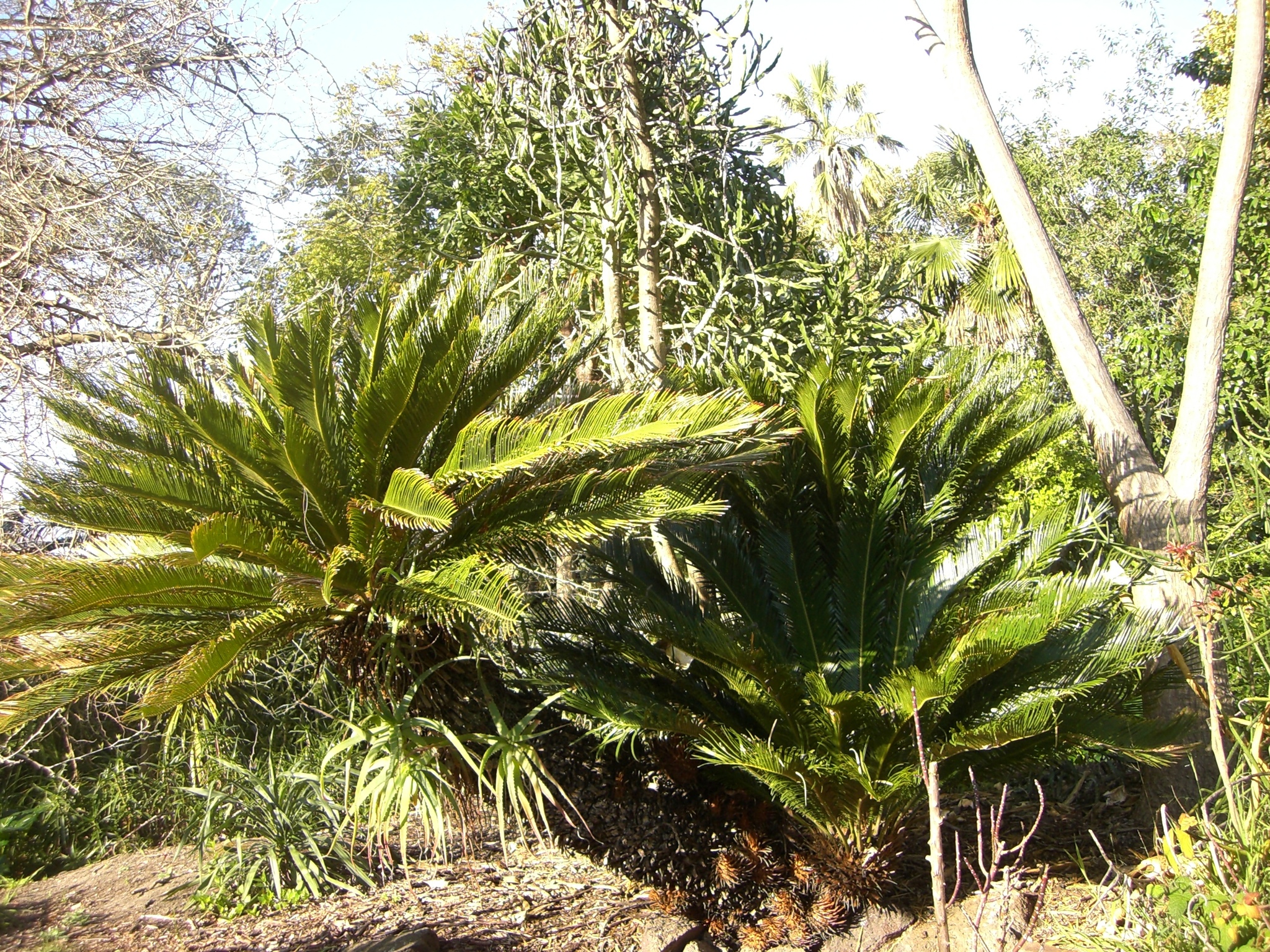
Greek kukas; probably a transliteration of the Greek koikas, plural of koix, an Egyptian palm and referring to obvious similarities of structure of these unrelated plants.Greek kukas; probably a transliteration of the Greek koikas, plural of koix, an Egyptian palm and referring to obvious similarities of structure of these unrelated plants.
Trunk unbranched with persisting old leaf-bases. Leaves not coiled at first. Leaflets uncoiling when young and having a single midrib with no lateral veins. Plants unisexual. Male cone terminal, erect with scale-like leaves bearing numerous globose pollen sacs below. Female scales not forming a cone but spirally arranged in a tuft of leaves that fall separately at maturity.
c. 40 species, mostly tropical, from Madagascar, E &SE Asia, Indomalesia, Polynesia and Australia (17 species from coastal and near-coastal areas of Queensland, Northern Territory and NW Australia). Grows mainly in rainforest and wet sclerophyll forest, often in sandy or rocky soils.
Mostly by seed, occasionally by removal of suckers and branches.
Treated nuts of Cycas media and other species were a food source for Arnhemland and Cape York aboriginal tribes (raw seeds are poisonous).
Leaflets with prominent midrib.
Butt (1990), Hill (1992).
Source: (1995). Cycadaceae. In: . Horticultural Flora of South-eastern Australia. Volume 1, Ferns, conifers & their allies. The identification of garden and cultivated plants. University of New South Wales Press.
